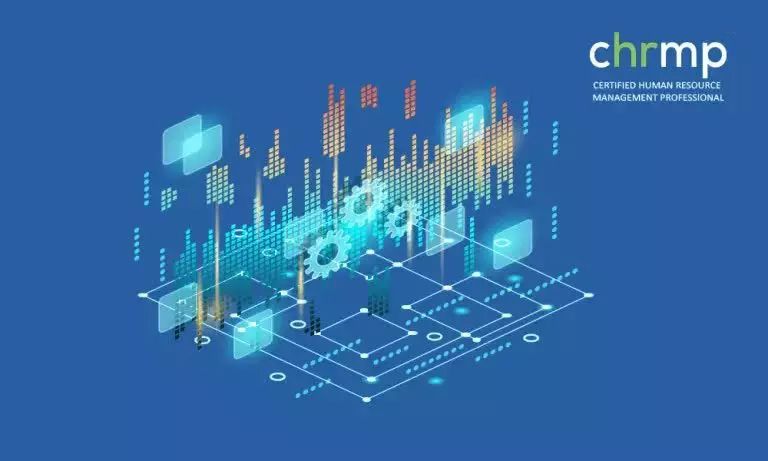

Big Data in HR analytics is transforming human resource management into a new avatar. This is because, HR with the help of Big Data, analytics tools and technologies is evolving new, real-life, implementable methods, to improve and predict the performance metrics of organizations.
Keeping the above in view, it will be quite prudent to discuss what is Big Data and what are its 7 distinct characteristics.
The author suggests that for a better understanding of this blog, the readers should go through the following blogs, which CHRMP has published earlier:
HR Analytics: Meaning & Importance
How to Get Started with HR Analytics in Your Organisation
7 Tips for Effective Utilisation of HR Analytics
The author proposes to discuss the following in this blog:
Big Data analytics definition; Wikipedia defines Big Data as follows:
Big data is a field that treats ways to analyze, extract information from, or otherwise deal with data sets that are too large or complex to be dealt with, by traditional data-processing application software.
Big Data analytics definition; The Oxford Dictionary defines big data as:
Extremely large data sets, that may be analyzed , to reveal patterns, trends, and associations, especially relating to human behavior and interactions.
Big Data analytics definition; As per Gartner, Big Data may be defined as:
Big data is high-volume, high-velocity and/or high-variety information assets that demand cost-effective, innovative forms of information processing that enable enhanced insight, decision making and process automation.
Big Data analytics definition; We may define Big Data as following:
The use of advanced analytics tools and programs, beyond the ability of commonly used software tools, to look at immense amounts of data across numerous systems within a defined time. In the context of Big Data in HR Analytics, it means use of multiple data sources to assess and improve HR practices, including Training and Development, Performance metrics, Compensation and Benefits Management, Recruitment metrics and Overall Business Performance metrics.
Big data velocity is the rate at which new information arrives and needs to be processed. it’s a combination of volume, variety, veracity, timeliness and value. If you’re not processing that much data or your data isn’t valuable, then there may be no need for an enterprise.
The 3 distinct characteristics of big data are the following:
HR metrics are the key to understanding how well your organization is performing. The first step towards improving performance and efficiency is by measuring it, so that you can see where improvements need to be made. KPI metrics for HR Analytics
How do we measure our success?
How do we know if we’re making progress or not?
The answer lies with the numbers: KPIs help us understand what’s going on inside an organization. They provide insight into whether things are working right and they also give us information about which areas need improvement. KPI metrics are used to evaluate organizational effectiveness also known as Evaluation metrics. These indicators allow managers to make informed decisions based upon facts rather than opinions.
By using these measurements, organizations can identify strengths, weaknesses, opportunities, threats and risks. Employee performance metrics and company metrics include quality of hire, job description and conversion rate/ offer acceptance rate, candidate experience, hiring manager satisfaction, training programs, performance metrics and the company would also measure productivity .
This allows them to take action before problems occur. Productivity metrics is another example of a business intelligence tool that provides insights into employee productivity. Productivity metrics include hours worked per week, number of days absent from work, average daily attendance rate, etc. Job boards help employers connect with qualified job seekers. Job boards usually feature open positions posted by small or medium sized enterprises.
SMEs tend to hire less experienced workers because they don’t want to pay higher salaries. As a result, most job postings on job boards are filled by entry level applicants. Another way to ensure company growth is management metrics is yet another type of management dashboard that shows key statistics related to various aspects of a company’s operations.
Some examples of management metrics include sales revenue, customer satisfaction scores, profit margins, inventory levels, cash flow, etc. In order to ensure effective communication between different departments, organizations typically implement internal messaging systems. Internal communications platforms offer several advantages over traditional email services. HR Metrics and analytics is one such solution that helps businesses collect, store, process, and share massive amounts of data. It also enables them to use these data sets to generate actionable insights.
A HR metrics dashboard is designed specifically to monitor performance indicators within human resource functions. A typical HR metrics dashboard includes KPIs, which measure the effectiveness of specific activities performed by HR professionals. For instance, KPI metrics could indicate whether the percentage of applications received has increased since last year. Another KPI metrics might track the total cost associated with onboarding new employees.
A human resource metrics is a tool that allows you to easily manage your workforce. You can view information like employee demographics, salary details, work history, skillset, education background, experience, etc., all from a single interface.
The volume of big data metrics must be very huge. Please note that we are not talking about giga-bytes, rather, we are talking about tera-bytes in peta-bytes. It contains millions and millions of cells in the familiar sheet. However, this would not fit in an excel sheet.
To understand this further, let us look at the maximum number of rows in an excel sheet. It used to be 65,000 earlier. However, now we have more than a million rows in an excel sheet (1,048,576 to be exact). These increased numbers of rows are still not sufficient to accommodate Big Data metrics.
Key metrics are the most important ones to be used for decision making. The key metrics is not only about how much money you make, but also what kind of work you get done and who does it?
Key Metrics – Key Performance Indicators :
Key metrics meaning: key metrics are measures that you want your organization to be able to track over time. They’re typically used for measuring business success or progress against goals.
For example, if you wanted to know whether your sales team was meeting their quota each month, then you could set up an indicator called “Sales Team Sales Quota” with a goal value of 100%. Then every month, you’d check this metric to see if they were hitting their target. If not, you might need to adjust some aspects of your strategy.
Analytics and metrics in payroll are the two most important aspects to consider when it comes to big data analytics. The first is how you can use your existing systems, processes and tools for a more efficient way to run your business. This includes using technology that will help you make better decisions about hiring, firing, training, compensation, etc. It also means making sure that all employees have access to information they need to do their jobs effectively.
Another thing we must keep in mind in Big Data metrics is the velocity of data metrics coming in. It is really very fast. In the conventional methods, the time taken in gathering, analyzing and coming to a conclusion used to take months and years. Moreover, the data metrics which were being gathered were static in nature.
This was because of the fact that once the data metrics were generated, it did not change. However, in the case of Big Data, it is no more static – rather constantly dynamic. For example, in social media – tweets, retweets, mentions, likes on twitter are constantly changing.
There is a constant influx of streaming data metrics. This is posing a great challenge before us. We may illustrate the hyper-velocity of data metrics on the internet in the best possible way, by the below infographic. It indicates what happens in one minute on the internet in 2020. Recruitment team members play a vital role in ensuring that new employees are able to perform effectively at work.
However, recruitment teams often struggle to find suitable candidates due to lack of resources and time constraints. To overcome this problem, recruiters must adopt innovative methods to improve candidate selection processes.
Big Data metrics contain variety. Tendai describes variety as follows:
Variety is the quality or state of being different or diverse; the absence of monotony.
Variety in Big Data metrics refers to all the structured and unstructured data metrics that have the possibility of getting generated either by humans or by machines. However, unstructured data metrics like emails, voice mails, handwritten texts, audio recordings etc., are also important elements of variety in Big Data.
Variety is the spice of Big Data in HR Analytics
Four additional characteristics of Big Data that have emerged over the years are Veracity, Viability, Visibility and Value, along with Volume, Velocity and Variety – which we have described above.
We must bear in mind that Big Data may be quite messy. We may not be in a position to have full trust in it. Further, it may happen that quality and accuracy are not there in Big Data. Thus, cleansing Big Data is a most important prerequisite before analyzing it. Veracity in Big Data refers to biases and noise .
Veracity in Big Data also means whether the data metrics, which we are mining for a specific problem analysis is suited to it or not. As per Gut Check, Veracity is the most important V of Big Data. As per them, it is much more important than the other 3 Vs (Volume, Velocity & Variety). Veracity is the biggest challenge before Big Data.
Data being relevant and of high quality is thus, very significant. Veracity helps to filter through what is important and what is not. The general dictionary meaning of veracity is: Conformity to facts, accuracy. The Cambridge Dictionary defines veracity as the quality of being true, honest or accurate. In that way, the veracity of Big Data means: It must be true, honest or accurate.
The general meaning of viability is to work successfully. Datafloq, describes viability, as carefully selecting those attributes in the data metrics, that are most likely to predict outcomes, that matter most to the organizations.
The scientists believe that 5 percent of attributes in the data metrics are responsible for 95 percent of the benefits. Keeping the above in view, paying attention to the most important attributes in big data metrics may prove to be extremely rewarding.
The dictionary meaning of visibility is the state of being able to see. We may also define it as the degree to which something has attracted general attention, prominence. Data visibility is basically the clarity of data metrics, so as to performance metrics analytic operations on it. If we cannot see it, we cannot analyze it.
As per reference rob-livingstone.com, the state of being able to see or be seen implies visibility. They further elaborate that data metrics from disparate sources need to be stitched together, where they are visible to the technology stack, making up Big Data. We must bear in mind that critical data metrics, even if it is available, but not visible, may prove to be a difficult paradigm in Big Data. Also, unauthorized visibility may prove to be a big risk. Hence, we must be alert all the time.
Bernard Marr, the author of the book “Data Driven HR: How to use Analytics and Metrics to drive performance”, adds a seventh V: Value. Having access to Big Data is totally insignificant, if we can’t derive value out of it. Regression metrics is one such metric which helps companies predict future trends and outcomes. It’s important to note that regression models are only useful when there is sufficient historical data available.
If this isn’t the case then other predictive modeling techniques should be considered instead. Regression analysis has been widely adopted within many industries including finance, marketing, manufacturing and healthcare. In fact, some studies have shown that businesses who use regression analyses outperform their competitors by up to 30%.
Based on the discussions in the preceding sections, we may clearly say the following.
The 7 Vs of Big Data
To get a better understanding of what is Big Data in HR, we may describe it using the 7 Vs, which are:
HR Analytics, People Analytics, and Workforce Analytics: What is the Difference?
Big data, business intelligence, and HR analytics: How are they related?
How HR analytics relates to big data and business intelligence?
If you are looking to upgrade your skills in HR Analytics, you might want to consider a certification in HR Analytics by CHRMP. To learn more click here.

© 2007-2025 CHRMP| All Rights Reserved | Powered by Ripples Learning & Research Private Limited
